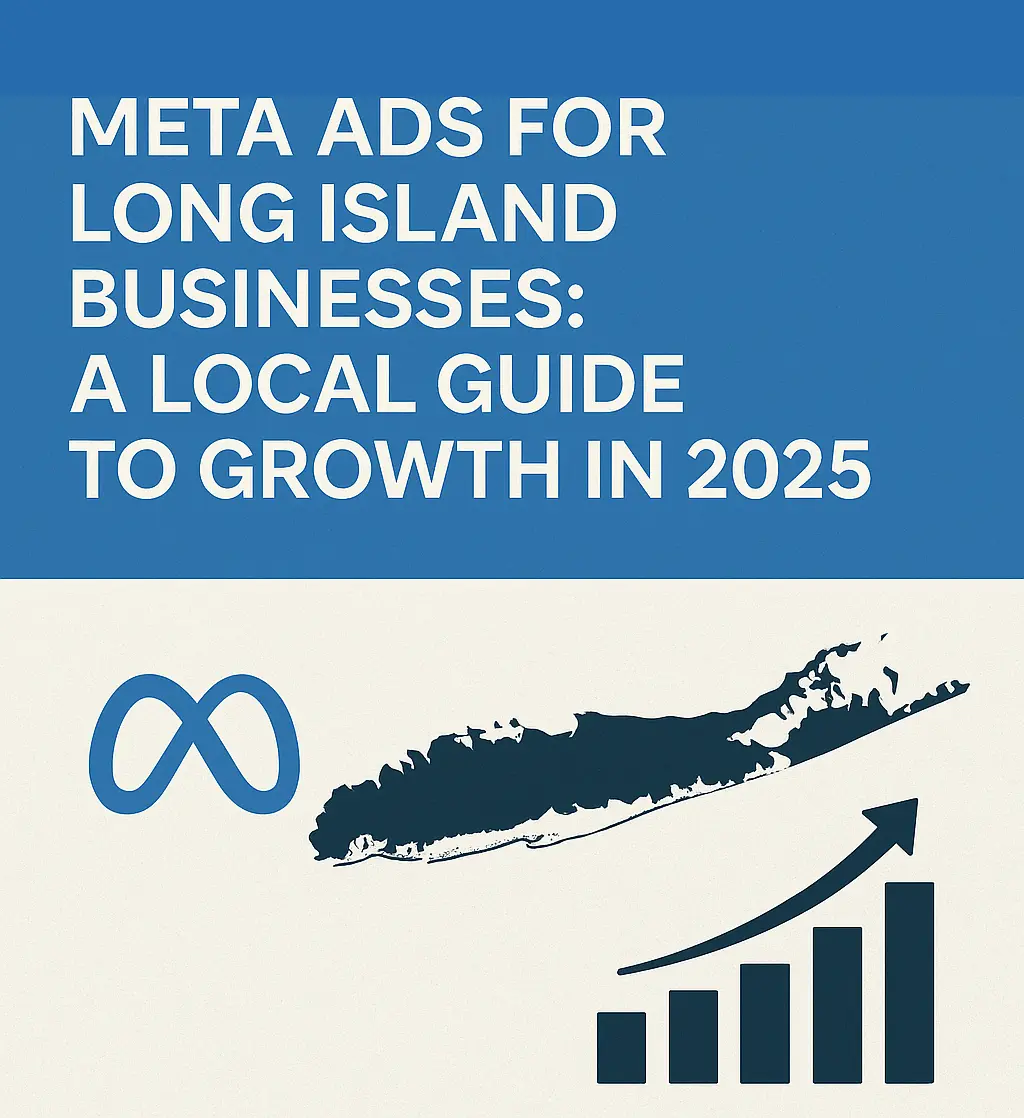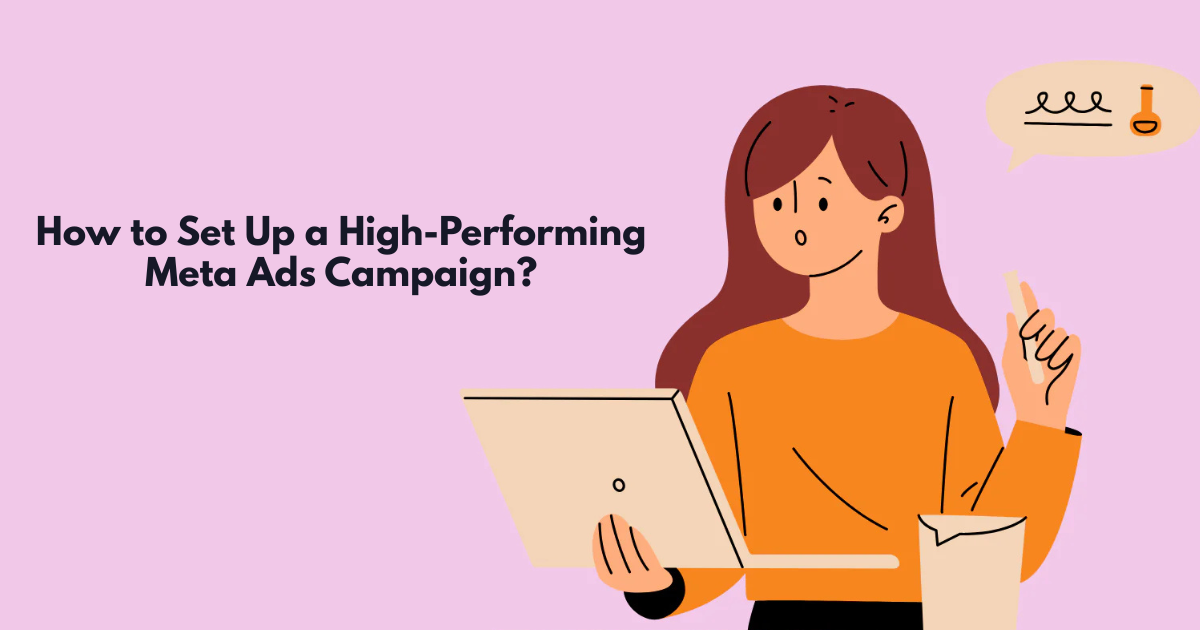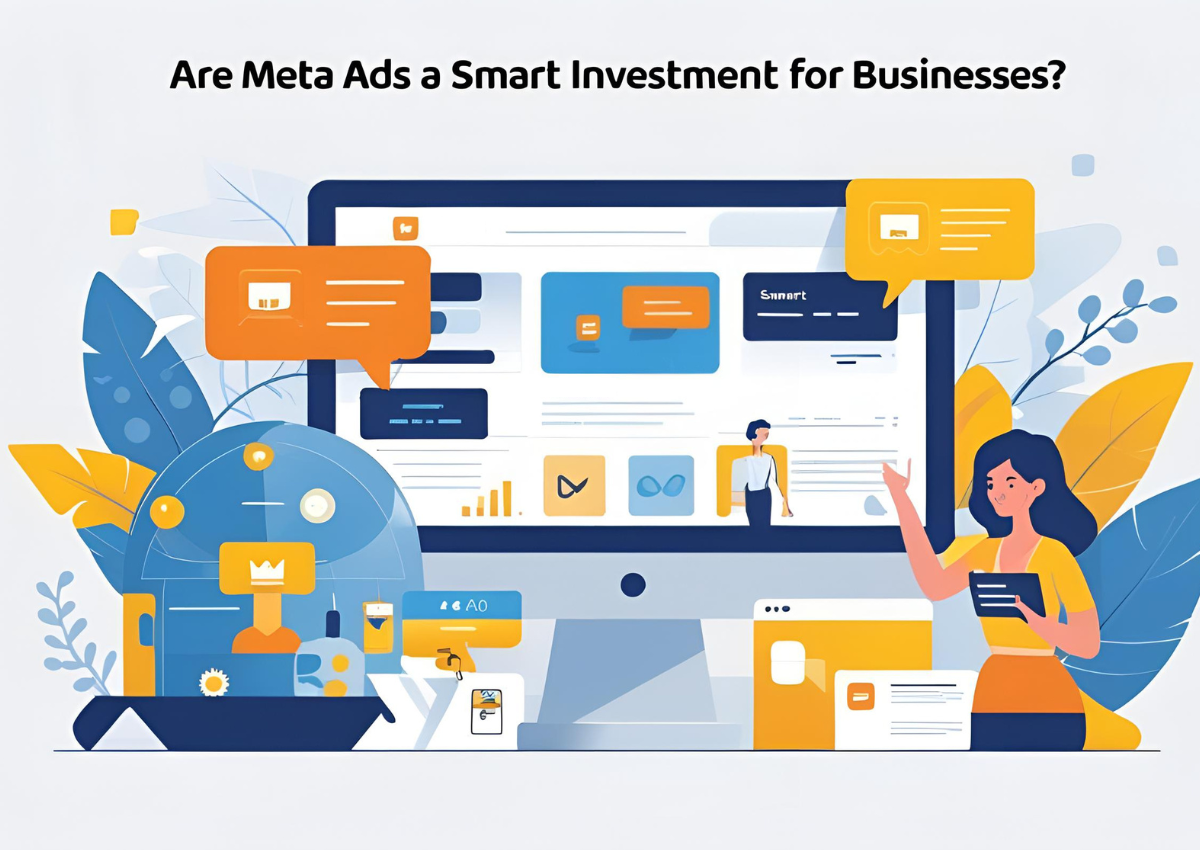Digital marketing costs can range from very low to very high. And that’s confusing. One company may charge $300 a month. Another might ask for $5,000 or more. So, how much does digital marketing cost in 2025?
Table of Contents
ToggleIt actually depends on a few things. And we’ll explain everything in this guide. Here, you’ll learn about the prices, how to set a digital marketing budget, and spot overpriced deals.
Digital Marketing Cost Breakdown by Service
On average, almost 67% of businesses spend around $50 – $6,000 on digital marketing per month. Prices vary by agency, tools, and the amount of effort required. Let’s look at typical costs by service first.
SEO (Search Engine Optimization)
- Small local SEO: $1,500–$2,500 per month
- Comprehensive local: $3,000–$5,000 per month
- National or complex SEO: $2,500–$7,500 per month, or more
- Many companies pay $500–$7,500 per month
- Small to mid-size companies often spend $1,000–$10,000 per month.
According to industry benchmarks from Search Engine Land, SEO performance should be measured against these cost ranges to ensure you’re getting proper value for your investment.
Google Ads (PPC) Management
- Average CPC (cost per click) is around $1.6–$5.3
- Agencies charge $500–$10,000 per month
- Many pay a percentage: 10–20 % of ad spend
- PPC management fee alone: $100–$5,000+ per month
Social Media Marketing
- Social media costs: $500–$5,000 per month
- Agency or freelancer management: $100–$5,000 per month, or $20–$50 per hour
Email Marketing
- Average spend is $51–$1,000 per month.
Web Design & Development
- Web design costs: $500–$5,000 per year
- Web development: $1,000–$10,000 per year
- Some agencies quote web design at $5,000–$15,000
Content Marketing
Firms spend $5,000–$10,000 per month on content. The global content marketing industry is estimated to reach $94 billion in 2025, highlighting the growing importance of this channel.
- Firms spend $5,000–$10,000 per month on content.
| Service | Low (Small Biz) | High (Enterprise/Complex) |
| SEO | $1,500/mo | $7,500+ / month |
| PPC Management | $500/mo | $10,000+ / month |
| Social Media Management | $500/mo | $5,000 / month |
| Email Marketing | $51 / month | $1,000 / month |
| Web Design | $500 / year | $15,000+ one‑time |
| Web Development | $1,000 / year | $10,000+ / year |
| Content Marketing | $5,000 / month | $10,000 / month |
Quick Takeaways
- SEO and PPC are the priciest monthly services.
- Email is budget‑friendly and basic to mid-tier.
- Design and dev often require a one-time payment annually.
- Content marketing hits mid‑high ranges monthly.
Factors That Affect Digital Marketing Costs
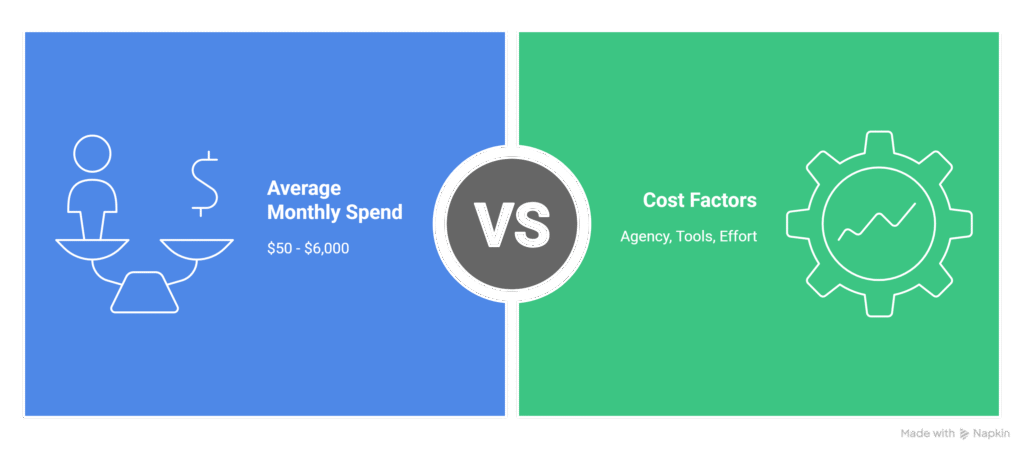
As we mentioned earlier, several factors highly influence digital marketing service pricing. Not all businesses pay the same for digital marketing. Prices change for many reasons.
Business Size and Industry
Bigger businesses usually need more complex strategies. They might spend up to 15% of their revenue just on marketing. For example, a local bakery pays less than a national e-commerce store or tech firm. Also, some industries like law or finance are more costly to advertise.
Geographic Location and Competition
Location matters a lot in digital marketing. Ads in big cities cost more than in rural towns. If your business is in New York, your costs will be higher than in small towns. Also, more competition in your area means you need stronger (and more costly) campaigns.
Campaign Complexity and Business Goals
Simple campaigns cost less. But complex campaigns with many parts can raise your bill fast. Running ads on Google only? That’s cheaper than ads + SEO + email + social media.
Agency Experience and Expertise
Experienced agencies charge more. But they often bring better results and fewer mistakes. A beginner freelancer may cost less, but they might take longer to deliver value.
Tools, Software, and Technology
Marketing tools are not free. Many agencies use paid software to track and boost results. This includes SEO tools, analytics platforms, email tools, ad software, and AI services. These costs are usually part of your monthly fee, even if not shown directly.
Timeline and Urgency
Want fast results? You may have to spend more. Urgent timelines increase work intensity. A 3-month plan will cost more per month than the same work spread over 6 months.
Digital Marketing Pricing Models Explained
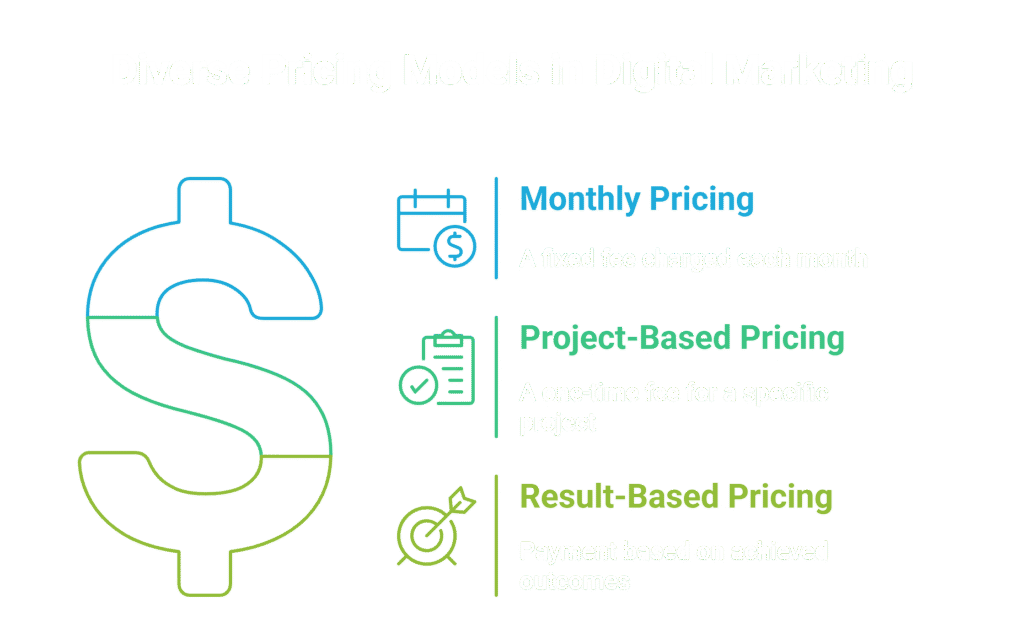
Digital marketing doesn’t have just one fixed price. Agencies use different pricing models. Some charge monthly, others per project, or even per result.
Monthly Retainer (Most Common)
This is the most used pricing model. You pay a fixed amount every month. The agency handles tasks like SEO, content, social media, and ads each month. This digital marketing cost per month model offers stability.
Pros:
- Easy to budget.
- Ongoing support and reporting.
- Great for long-term growth.
Cons:
- May feel expensive upfront.
- Requires regular communication to check results.
Average Cost: $500-$20,000 or more (based on service level and business size).
Project-Based Pricing
You pay one time for a specific job. This could be a website or a campaign. The agency sets a price for the full project and works on that only.
Pros:
- One-time cost.
- Clear start and end.
- Good for short-term tasks.
Cons:
- No long-term support.
- May not include updates or changes later.
Average Cost: $500 – $50,000+
Performance-Based Pricing
You only pay if certain results are reached. This includes leads, clicks, or sales. It’s often used in PPC ads or affiliate marketing campaigns.
Pros:
- Pay for actual results.
- Low risk in early stages.
Cons:
- It may cost more per result.
- Not common for small agencies.
- Harder to guarantee results.
Cost Format: Pay-per-lead or commission-based (e.g., 10–30% of sale value).
Hourly Consultation Rates
Some consultants or freelancers charge by the hour. This is common for strategy help. They might help with audits, planning, or teaching your team.
Pros:
- Flexible.
- Ideal for small fixes or advice.
Cons:
- It can get costly if hours add up.
- No full campaign work included.
Average Rate: $50–$300 per hour.
How to Budget for Digital Marketing
Many small business owners ask, How much should I spend on digital marketing? But honestly, there’s no single answer. But there are some trusted rules and tips to help.
Use Industry Benchmarks
Experts suggest spending 2-5% of your total revenue on marketing. For B2C companies, you should spend 5–10% of your revenue. According to HubSpot’s 2025 State of Marketing report, companies that document their digital marketing strategy report greater success compared to those that don’t. If you just want to stay visible, 5–7% may be enough.
Startups vs Established Businesses
Startups need to spend more at first to build brand awareness and traffic. They usually don’t have repeat customers yet, so growth is key. Established businesses can spend less if they already have strong customer loyalty.
ROI Expectations and Timeline
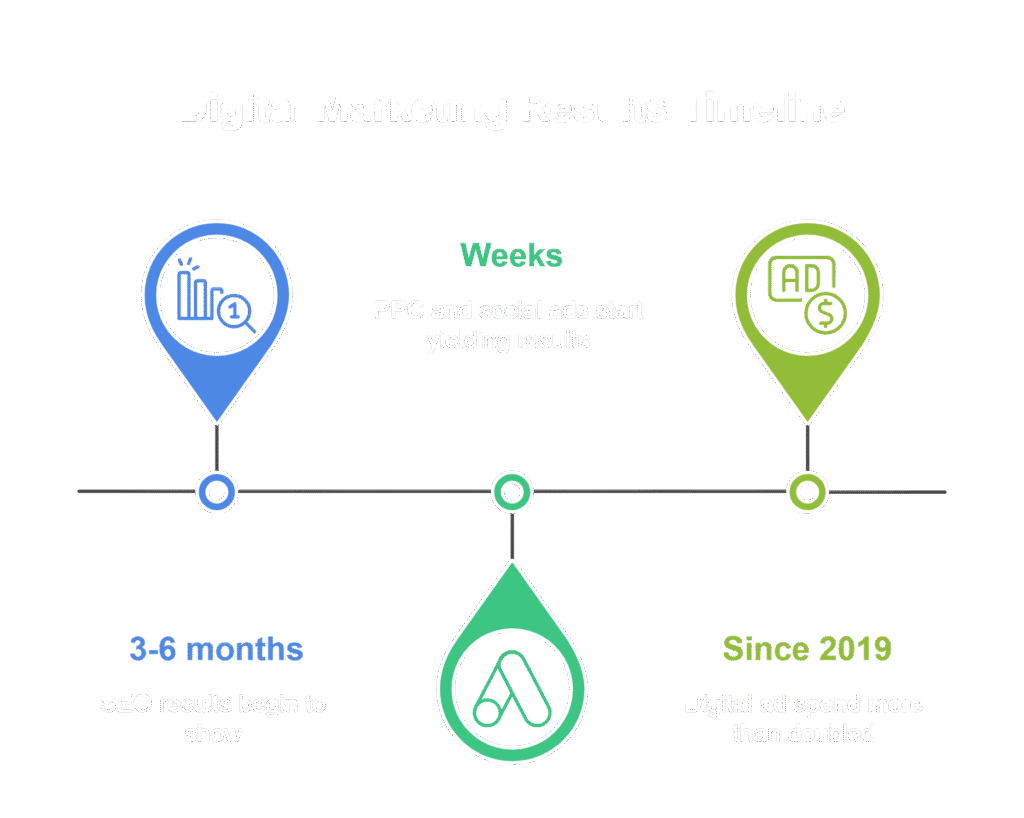
Marketing doesn’t bring results overnight. Some results take weeks or months to show. SEO may take 3–6 months. PPC and social ads work faster but need a budget. According to DataReportal’s Global Digital Overview, digital ad spend has more than doubled since 2019, showing the growing investment and competition in digital channels.
A good ROI (Return on Investment) is usually 3:1 or higher. It means you earn $3 or more for every $1 spent.
How to Split Your Budget Across Channels
| Channel | Suggested % of Budget | Notes |
| SEO | 25–35% | Long-term visibility and traffic |
| Google Ads (PPC) | 20–30% | Fast leads and targeted sales |
| Social Media Ads | 15–20% | Brand awareness and engagement |
| Content Marketing | 10–20% | Blogs, videos, and email content |
| Email Marketing | 5–10% | Low-cost channel for conversions |
| Website Maintenance | 5–10% | Keep your site fresh and working |
Red Flags: When Digital Marketing is Overpriced
Some agencies charge too much but give too little. Here are some of the warning signs.
Vague Packages with No Clear Deliverables
Be careful if the agency doesn’t list exactly what you’ll get each month. They say “we’ll grow your business”, but offer no specific plan. You should always know what they will do, when, and how often..
High Fees Without Proven Experience
It’s okay to pay more if the agency has real experience and past results. But don’t pay top dollar for teams that can’t show success stories, reviews, or client results.
No Reporting or Transparency
You should get regular updates. Monthly reports show traffic, leads, and other results. According to The Social Shepherd’s digital marketing statistics, 89% of marketers witness a boost in their returns when they incorporate personalization into their campaigns, but you need proper reporting to track these improvements. If they hide numbers or never send updates, something may be wrong.
One-Size-Fits-All Packages
Good marketing plans are custom. Every business has different needs and budgets. But offering the same services and pricing no matter your business type or size is a big red flag.
Locked-in Long-Term Contracts
Avoid signing a 12-month contract with no exit option. Because you can’t cancel early without big penalties or hidden fees. That’s risky for small businesses.
Questions to ask Potential Agencies
- What’s included each month?
- Can I see past results or case studies?
- Do I get monthly reports?
- Can I cancel anytime?
- Will you adjust the strategy if things don’t work?
Getting the Best Value from Your Digital Marketing Investment
You work hard for your money. Let’s make sure your marketing investment works hard too.
Ask for Transparency from Day One
Always ask how your money will be spent. Get a list of monthly tasks. Make sure they explain why each part matters to your goals.
Honest agencies, like Exposure Media, explain their process clearly before you sign anything.
Choose Contracts That Fit Your Needs
Month-to-month contracts give you more control and less risk. Some longer contracts may save money, but only if they offer proven results.
Tip: Ask for a 90-day trial. Then extend if you’re happy.
Know What to Expect in the First 90 Days
The first 90 days are all about setup and early wins. You should see better traffic, leads, or engagement, even if slow at first.
So you can expect,
- Setup of tools and accounts
- First round of content or ads
- Basic traffic and performance reports
But don’t expect,
- Huge sales jumps overnight
- Top Google rankings in one month
For more insights on what constitutes realistic SEO timelines and benchmarks, refer to industry standards outlined by SEO experts.
Want help figuring out the right plan for your business? At Exposure Media, we do help. We share clear goals, timelines, and reports, no hidden fees, no surprises. Whether you’re a startup or a growing business, we build what fits your needs.
Conclusion
Digital marketing is not one-size-fits-all. It depends on your business size, goals, location, and the extent of your growth ambitions. You may spend $500 a month, or $5,000, depending on what you need and want. The key is to choose the right services, the right agency, and the right strategy.
Still wondering how much you should spend on digital marketing? Book a free consultation with Exposure Media today.



